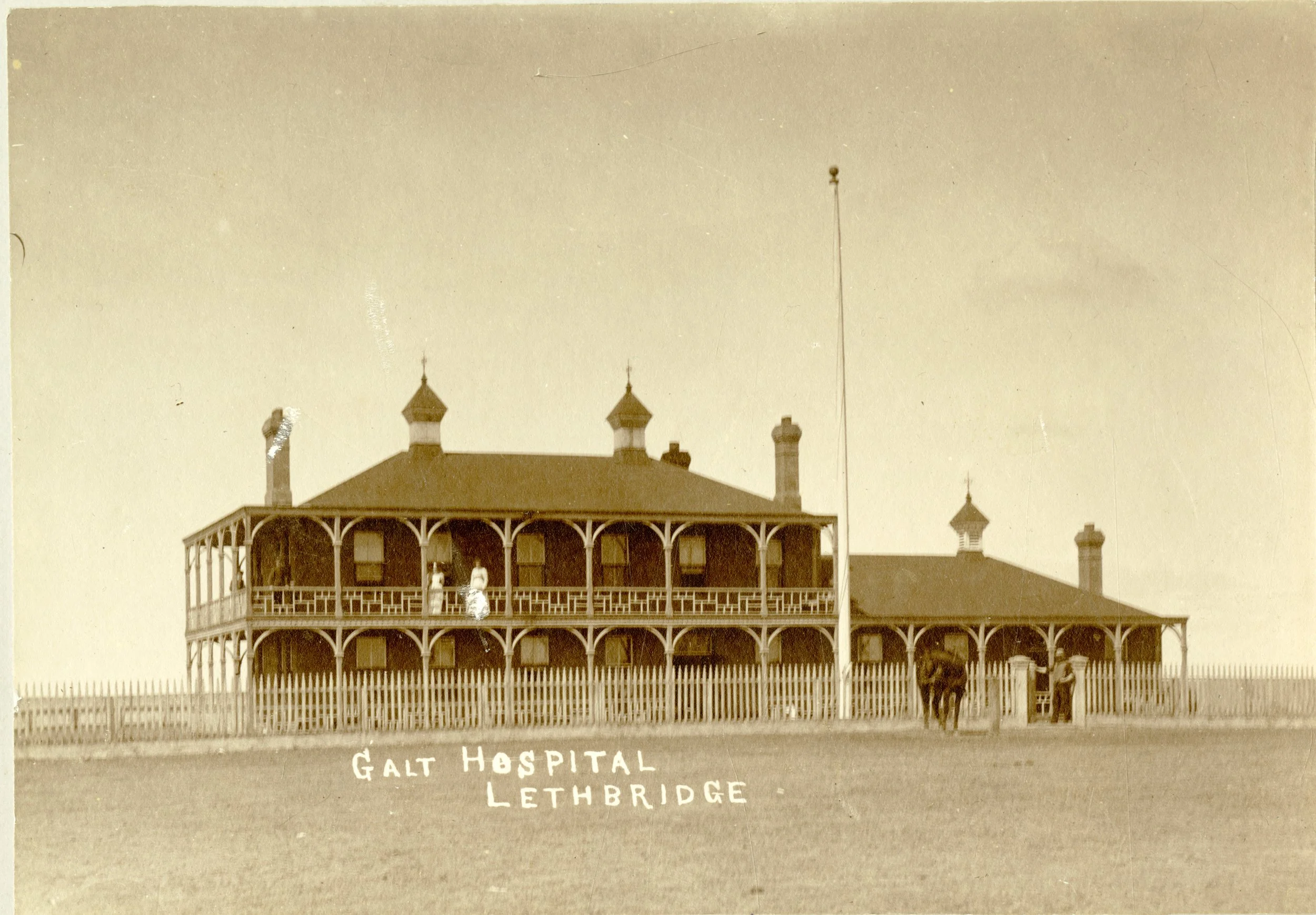Coal Miners on Strike
View of the United Mine Workers Association bus taking miners to work, ca. 1955.
Image courtesy of the Galt Museum & Archives | Akaisamitohkanao’pa, 19901015017
Construction of the original Galt Hospital in 1891 was financed by Sir Alexander Galt, owner of the Northwest Coal and Navigation Company. Coal miners in the Oldman River Valley desperately required health care due to unsafe working conditions. Frequent exposure to dust and toxins often led to illnesses such as pneumoconiosis (black lung disease), pulmonary disease, asbestosis, and cancer. Without access to adequate healthcare, miners were left unwell physically and unable to provide for their families. Low pay and the desire for a grievance procedure left miners on edge, wanting to be better cared for by their employer.
When the recently formed Local 574 of the United Mine Workers of America (UMWA) District 18, a union in the Crowsnest Pass, proposed Lethbridge miners join, the Galts were unwilling to negotiate with workers or union. Refusing to bargain with workers was not a new practice, the Galts had refused negotiation for the past two decades. Miners who had already joined the union hoping for better pay and safer working conditions were promptly fired for their involvement.
On March 8, 1906, tensions bubbled over, and more than 500 miners walked off the job. In a town with a population of 2,500, this was incredibly significant. It took nine months, 13 explosions, Pinkerton guards, 10% of Canada’s standing Royal Northwest Mounted Police, public pushback from heating coal shortages, and mediation from future Prime Minister William Lyon Mackenzie King to end the strike. At the strike’s conclusion, the miners won a significant pay increase, a grievance procedure, and the right to belong to the union.
Sir Alexander Galt, ca. 1892.
Image courtesy of the Galt Museum & Archives | Akaisamitohkanao’pa, 19740056000
Though there were significant improvements from the 1906 strike, miners went on strike again in 1909. In 1910, Elliot Galt donated $30,000 to finance a new hospital building, another hopeful step in the right direction. Miners in Lethbridge continued to strike for periods of three to eight months in 1911, 1919, 1923, and 1924, and have served as inspiration for labour movements worldwide.
Original Galt Hospital, ca. 1891
Image courtesy of the Galt Museum & Archives | Akaisamitohkanao’pa, 19760208108



